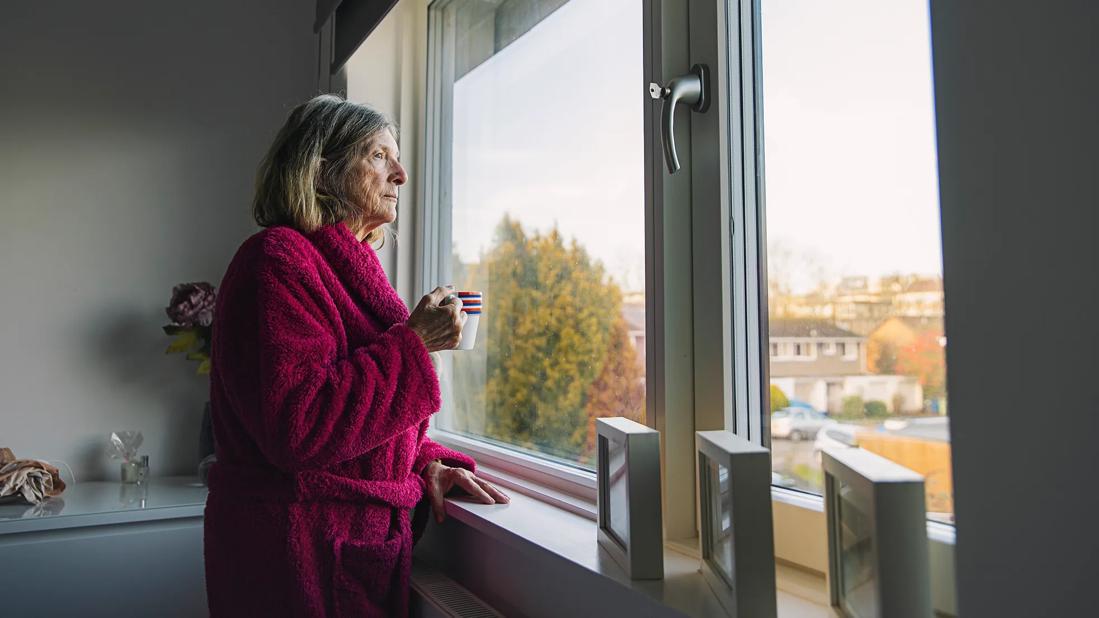Understanding COVID-19 Guidelines
Most people can return to work and regular life when they’re symptom-free for 24 hours

Respiratory illnesses like COVID-19 and the flu target your throat and lungs. They make it harder to breathe, sleep or go about your life.
Runny noses and sore throats spike during respiratory season, but they continue to cause illness year-round. Infectious disease physician Steven Gordon, MD, shares the latest COVID-19 protocol and what you can do to avoid getting sick.
COVID-19 protocols: everyday prevention
COVID-19 may not be making the headlines it once did. But, like pneumonia, it can still cause severe, life-threatening illness. You’re especially at high risk if you:
- Are over 65
- Are pregnant
- Have a lung or heart condition
- Are in the hospital or a long-term care facility
- Smoke or used to smoke
- Have a weakened immune system
Other medical conditions like cancer and diabetes can also increase your risk of being hospitalized with COVID-19. And more than half of pediatric hospitalizations occur in children under 2 years, with a majority having no underlying medical condition.
If any of this concerns you about getting sick, here’s what you can do to prevent COVID-19:
Prevention tips
Since it’s a respiratory illness, the current COVID-19 guidelines recommend taking the same precautions you would for the flu or respiratory syncytial virus (RSV).
“Any of these respiratory viruses are dangerous and can spread fast,” says Dr. Gordon.
Protocol for avoiding respiratory illnesses like COVID-19 include the following prevention strategies:
- Vaccinations: The Advisory Committee on Immunization Practices (ACIP) has provided mixed messaging on current vaccine guidelines. Talk to your primary care provider about whether a COVID-19 vaccine makes sense for you. Recommendations may vary based on age, health conditions and personal risk factors.
- Good hygiene: Cover your mouth if you’re coughing or sneezing, and wash your hands on a regular basis. It also helps to clean countertops and other surfaces.
- Fresh air: Improving indoor air quality can make it easier to breathe and limits your exposure to respiratory viruses.
- Wearing masks: Some people choose to wear a mask as an added precaution when they’re sick because research shows its effective in reducing the spread of respiratory viruses.
- Protecting your immune system: Sleep, stress relief, regular exercise and taking care of other chronic conditions can help your immune system stay strong and healthy.
COVID-19 testing guidelines
At-home tests are a part of safety protocols and they’re available for anyone experiencing symptoms. If you’re ill and want to know if it’s COVID-19 or the flu, getting a test will help you figure out what kind of infection you have and what treatment will help you feel better.
You can always schedule an appointment with your primary care provider, too. And if you’re too sick to leave home, telehealth appointments are also available to help you get a diagnosis.
Quarantine and isolation guidelines
Chances are, if you’re sick with a respiratory illness, you’re not going to want to spend a lot of time around other people. Rest is a big factor in how fast your body can rid itself of an infection, so you might want to call off work or stay home from school until your symptoms get better.
The general rule for any respiratory illness, including COVID-19, is to stay home and try to avoid contact with other people until you’re:
- Symptom-free (including a fever) for at least 24 hours
- No longer taking fever-reducing medication like acetaminophen (Tylenol®)
If you have symptoms and can’t avoid being around others, doctors advise wearing a mask to stop the spread of infection so other people you interact with won’t get sick.
Once your symptoms pass, doctors recommend wearing a mask and limiting unnecessary contact with others for at least five days just to be on the safe side. If you start to feel worse or your symptoms return, make an appointment with your healthcare provider and take care of your symptoms at home.
Why following guidelines still matters
COVID-19 can be serious for some people, but anyone can get it — even if you’re healthy.
These guidelines reflect our current medical understanding of how respiratory viruses spread and what’s needed to treat them. Like any health advice, they may evolve as more research becomes available.
“The latest recommendations are the same for any respiratory illness,” Dr. Gordon notes. “They help people to take care of themselves and stop the spread.”
Updates and staying informed
If there’s one thing we learned from COVID-19, it’s that viral illness protocols can change. New information becomes available all the time as viruses mutate to survive. Today’s guidelines reflect where we are now. There are even data trackers in place to measure how active respiratory viruses are year-round. Having this information helps when you’re trying to decide how to protect yourself from infection.
As these guidelines change, your doctors are here to answer any questions you have — about protocol, treatments, vaccines or care strategies. It’s always helpful to have up-to-date information so you can make the best decisions for yourself and your family when a respiratory illness strikes.